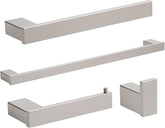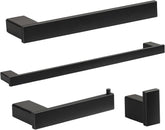Avoid These Mistakes: A Pitfall Guide for Pipe Installation in European Homes
Pipe installation in European homes may seem straightforward, but it often leaves hidden risks due to overlooked factors like climate adaptation and non-compliance with local standards. Examples include pipe corrosion from humid climates in Southern Europe, pipe freezing and cracking from low temperatures in Northern Europe, or water leakage caused by improper joint sealing. As a brand deeply rooted in the European market, KLABB’s pipes and vacuum hoses can help you avoid most issues—from product selection to post-installation cleaning. Below, we’ll share practical solutions to avoid common pitfalls, paired with typical installation mistakes
1. 3 Common Installation Mistakes That 90% of European Households Have Made
1.1 Ignoring "Climate-Material" Matching, Leading to Poor Pipe Durability
Europe has significant climate differences between the north and south: Northern Europe often sees winter temperatures as low as -20°C, and ordinary PVC pipes tend to become brittle and crack in such conditions; Southern Europe has year-round humidity, causing low-quality steel pipes to rust and leak in just 2 years.
Pitfall-Avoidance Solution: Choose KLABB’s climate-specific materials—prioritize 304 stainless steel pipes for Northern Europe (freeze-resistant and crack-resistant, suitable for low-temperature environments) and lead-free brass pipes for Southern Europe (antibacterial and corrosion-resistant, non-rusting even with long-term exposure to humidity). Both comply with the EU’s EN 1452 drinking water safety standards, minimizing maintenance troubles from the start.
1.2 Inadequate Joint Sealing, Resulting in Hard-to-Fix Leaks Later
Most European households use embedded pipes. If joints are not properly sealed during installation (e.g., insufficient Teflon tape wraps or mismatched gasket sizes), water may seep from walls or floors after move-in. Repairing this often requires wall demolition, leading to high costs.
Pitfall-Avoidance Solution: Use KLABB pipes’ included "double-layer sealing kit"—first wrap 5 clockwise turns of the brand’s dedicated Teflon tape (30% thicker than regular tape for better sealing), then attach a food-grade silicone gasket (compatible with European standard pipe diameters). Finally, gently tighten with a wrench until "snug but not slipping"—avoid over-tightening to prevent joint deformation.
1.3 Incomplete Post-Installation Cleaning, Causing Pipe Clogs from Debris
Many installation teams only clean surface areas after finishing. Dust and debris left inside pipes accumulate with water flow over time, potentially clogging showers or faucets. This issue is worsened in parts of Europe with hard water, where debris combined with limescale accelerates pipe aging.
Pitfall-Avoidance Solution: After installation, first use a KLABB vacuum hose (compatible with mainstream European vacuum cleaner ports) with a slim suction head to reach into pipe openings and sink gaps, sucking up residual debris. Then turn on the water supply and let it run for 30 seconds to flush the inside of the pipes. Finally, use the hose to clean tool residues on the floor for hassle-free future use.
2. KLABB Installation Accessories: Help Beginners Avoid Detours
Beyond pipes themselves, KLABB’s "European Home Installation Kit" is highly practical. It includes labeled Teflon tape (for easy control of wrap counts), a diameter measurement card (to quickly match pipe sizes), and a non-slip wrench (to prevent joint damage). The instruction manual also notes differences in pipe standards across European countries (e.g., Germany’s DIN, France’s NF), ensuring even DIY installers can accurately comply with local regulations and reduce the risk of "wrong purchases or wrong installations."
For pipe installation in European homes, the key lies in "choosing the right products + avoiding detailed pitfalls." KLABB comprehensively adapts to European climates and standards—from material selection and sealing design to cleaning assistance. Following this pitfall-avoidance guide ensures one-time successful pipe installation, cutting down on future maintenance time and costs.




